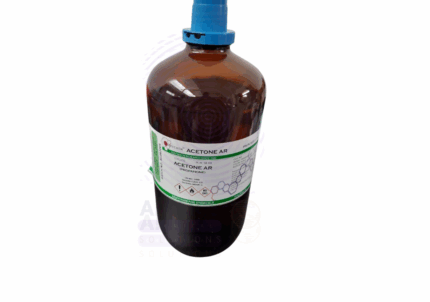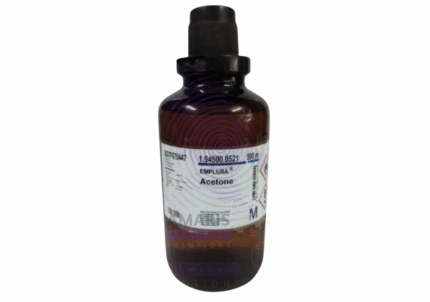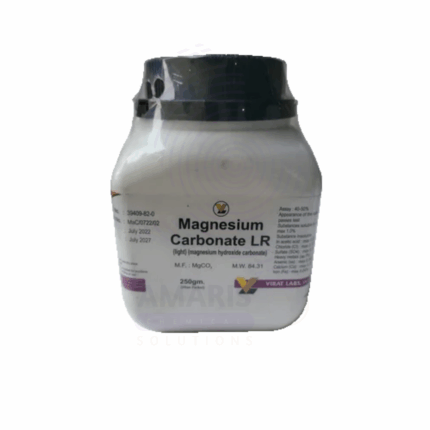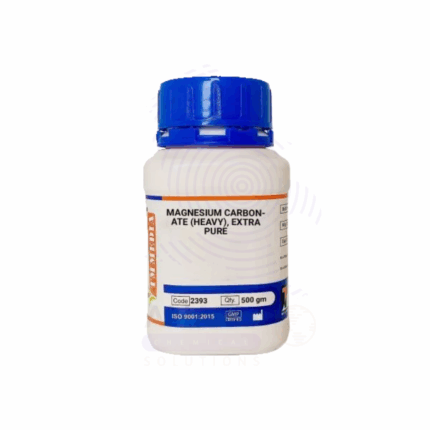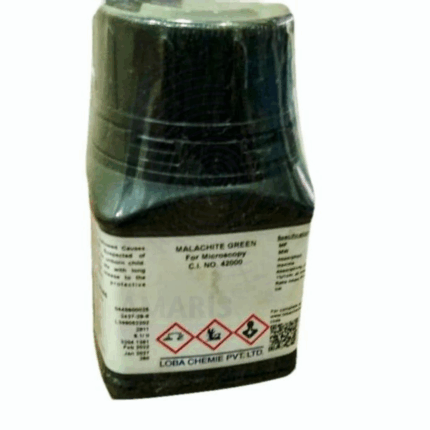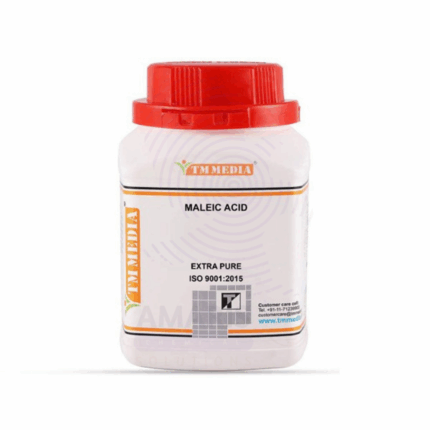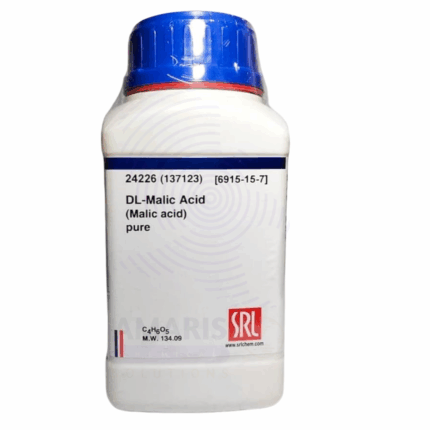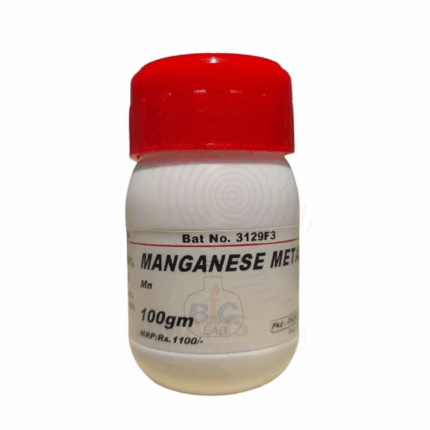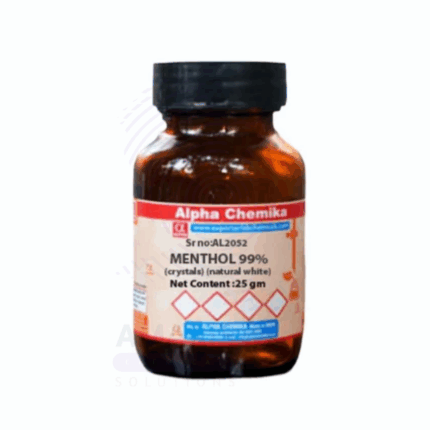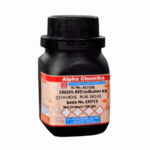
Cresol Red Indicator Extra Pure
$ 17.50 Original price was: $ 17.50.$ 17.43Current price is: $ 17.43.
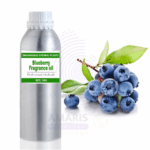
Blue Berry Fragrance Oil
$ 21.69 Original price was: $ 21.69.$ 21.57Current price is: $ 21.57.
Cupric Carbonate Extra Pure
Whatsapp Order
Cupric Carbonate Extra Pure is a fine, green, high-purity compound used in laboratories for inorganic synthesis, analytical chemistry, and educational demonstrations. It serves as a reliable source of copper ions in reactions and decomposes upon heating to form copper oxide, making it useful for studying thermal decomposition. In qualitative analysis, it is employed to observe characteristic reactions of copper salts. Its extra pure grade ensures minimal interference from impurities, supporting accurate experimental outcomes. Cupric carbonate should be handled in a dry environment and stored in tightly sealed containers to prevent degradation and maintain stability.
Description
Table of Contents
Toggle
Cupric Carbonate Extra Pure
Primary Uses
- Precursor for Copper Compounds
- Commonly used to prepare other copper(II) salts (like CuCl₂, Cu(NO₃)₂) via reaction with various acids.
- Ideal for inorganic synthesis training.
- Qualitative Inorganic Analysis
- Helps students observe typical copper ion reactions—green-blue color is visually distinctive.
- Demonstrates decomposition and acid reactions in teaching labs.
- Catalyst Precursor or Component
- Converted to CuO (cupric oxide) by heating, which is then used as a catalyst in redox and organic reactions.
- Pigment Preparation Studies
- Historically used in pigments (verdigris) and now studied in labs exploring historical art materials.
Secondary Uses
- Thermal Decomposition Experiments
- Upon heating, it decomposes to CuO and CO₂, making it useful for thermal stability demonstrations and stoichiometry exercises.
- CO₂ Absorption and Gas Evolution Studies
- Reacts with acids to release carbon dioxide gas, ideal for gas collection experiments.
- Nanomaterial Synthesis
- Acts as a precursor in nano copper oxide or copper carbonate material synthesis, especially in materials science labs.
- Demonstration of Metal Carbonate Behavior
- Used to show characteristic properties of transition metal carbonates vs alkali/alkaline earth counterparts.
KEY PRODUCT FEATURES
1. Basic Identification Attributes
- Chemical Name: Cupric Carbonate
- Common Name: Copper(II) Carbonate
- CAS Number: 12069-69-1 (often listed as basic copper carbonate)
- Chemical Formula: CuCO₃·Cu(OH)₂ (basic form)
- Molar Mass: ~221.11 g/mol
- Grade: Extra Pure (Laboratory/Reagent grade)
2. Physical & Chemical Properties
- Appearance: Green to bluish-green fine powder
- Odor: Odorless
- Solubility:
- Insoluble in water
- Soluble in acids with effervescence (due to CO₂ release)
- Decomposition: Releases CO₂ and forms copper oxide on heating
- pH (suspension): Slightly basic
3. Safety & Hazard Attributes
- GHS Classification:
- H302: Harmful if swallowed
- H315: Causes skin irritation
- H319: Causes serious eye irritation
- H410: Very toxic to aquatic life with long lasting effects
- NFPA Ratings:
- Health: 2
- Flammability: 0
- Reactivity: 0
- First Aid Measures:
- Inhalation: Move to fresh air and seek medical attention if symptoms persist
- Skin Contact: Wash with soap and water
- Eye Contact: Rinse with water for several minutes; seek medical advice
- Ingestion: Rinse mouth; do not induce vomiting unless instructed
4. Storage & Handling Attributes
- Storage Conditions:
- Store in a tightly sealed container
- Keep in a dry, cool, well-ventilated area
- Avoid exposure to strong acids or reducing agents
- Handling Advice:
- Use gloves, lab coat, and safety goggles
- Handle in a fume hood if dust is likely to become airborne
5. Regulatory & Compliance Attributes
- EINECS Number: 235-113-6
- UN Number: Not regulated for transport
- REACH Status: Registered
6. Applications in Laboratory
- Primary Use:
- Qualitative and quantitative analysis of copper compounds
- Other Uses:
- Reagent in inorganic synthesis
- Precursor to other copper salts
- Pigment research and corrosion studies
- Educational demonstrations on carbonate decomposition and metal salt behavior
SAFETY HANDLING PRECAUTIONS
SAFETY PRECAUTIONS
- PPE Required:
- Lab coat
- Nitrile gloves
- Safety goggles
- Dust mask if handling in powder form
- Handling:
- Avoid creating or breathing dust
- Do not ingest or allow skin/eye contact
- Work in a fume hood when heating or reacting with acids
- Storage:
- Store in a cool, dry, well-ventilated place
- Keep container tightly closed
- Protect from moisture and incompatible substances (e.g., acids)
FIRST AID MEASURES
- Inhalation:
- Move to fresh air
- Seek medical attention if symptoms develop
- Skin Contact:
- Wash with soap and water
- Remove contaminated clothing
- Eye Contact:
- Rinse with plenty of water for 15 minutes
- Get medical help if irritation persists
- Ingestion:
- Rinse mouth thoroughly
- Do not induce vomiting
- Seek immediate medical attention
FIREFIGHTING MEASURES
- Flammability: Non-flammable
- Hazards: Decomposes under fire to release toxic fumes (copper oxides, CO₂)
- Extinguishing Media:
- Use CO₂, dry chemical powder, or foam
- Avoid using water directly on powder fires
- Protection for Firefighters:
- Use self-contained breathing apparatus
- Wear full protective gear
Related products
Acetone Extra Pure
Acetone Extra Pure is a highly volatile, flammable, and colorless liquid widely used as a powerful solvent in laboratory and industrial applications. Known for its exceptional ability to dissolve a wide range of substances, it is commonly employed for cleaning laboratory glassware, thinning resins, and removing organic residues. In the cosmetics and pharmaceutical industries, acetone is used in nail polish removers and formulation processes. Its high evaporation rate and purity make it suitable for analytical procedures and synthesis work, especially where contaminant-free solvents are essential. With a distinct odor and low boiling point, Acetone Extra Pure is an indispensable reagent for both routine and specialized chemical operations.
Magnesium Carbonate Extra Pure
Magnesium Carbonate Extra Pure is a high-purity, white powder valued for its excellent absorbent and antacid qualities. It is commonly used in pharmaceuticals as a magnesium supplement or antacid, and in food applications as a drying agent, anti-caking agent, or acidity regulator. In the cosmetics and personal care industry, it functions as a filler and a bulking agent in powders and creams. It is also employed in laboratory settings for analytical applications due to its consistent chemical composition. Its high absorbency and stability make it useful in rubber, ceramics, and sports grip products as well.
Magnesium Carbonate Heavy Extra Pure
Magnesium Carbonate Heavy Extra Pure is a denser, high-purity grade of magnesium carbonate known for its exceptional stability, low solubility in water, and high absorbent capacity. It is widely used in pharmaceutical formulations as an antacid and magnesium supplement, and in food processing as an anti-caking agent and food additive. Its heavier bulk density makes it ideal for industrial uses such as in rubber and plastic manufacturing, where it serves as a reinforcing filler. In cosmetics, it contributes to moisture control in powders and skin care products. It is also valued in laboratories for analytical applications where precision and consistency are essential.
Malachite Green Extra Pure
Malachite Green Extra Pure is a synthetic dye of exceptional purity, recognized for its intense green coloration and versatile laboratory uses. It is commonly used as a biological stain, especially in microbiology for identifying and differentiating bacterial species, and in histology for staining cell structures. Additionally, Malachite Green serves as an effective fungicide and antiparasitic agent in aquaculture and laboratory testing. Its high purity ensures reliable performance in analytical applications, including redox titrations and as a pH indicator in specific chemical reactions. Its vivid color and chemical stability make it a valuable reagent in both teaching and professional research settings.
Maleic Acid Extra Pure
Maleic Acid Extra Pure is a high-purity organic compound valued for its strong acidic properties and wide range of laboratory and industrial applications. It appears as a white crystalline solid and is primarily used in organic synthesis, particularly in the production of polymers, resins, and plasticizers. In research laboratories, Maleic Acid serves as a buffering agent, a precursor to fumaric acid, and an intermediate in various chemical reactions. Its excellent solubility in water and compatibility with other reactants make it especially useful in biochemical and analytical procedures. The extra pure grade ensures minimal contamination, providing reliable results in sensitive experiments and high-precision manufacturing processes.
Malic Acid Extra Pure
Malic Acid Extra Pure is a high-grade, naturally occurring dicarboxylic acid known for its sharp, tart flavor and versatility in both laboratory and industrial settings. It is commonly found in fruits such as apples and is widely used as an acidulant in food and beverage formulations, where it enhances flavor, preserves freshness, and improves pH stability. In laboratory applications, Malic Acid is employed in biochemical research, particularly in studies involving the citric acid cycle, due to its role as an intermediate metabolite. Its excellent solubility in water and mild acidity also make it suitable for cosmetic formulations and pharmaceutical preparations. The extra pure grade ensures high analytical accuracy and consistent quality across applications requiring strict purity standards.
Manganese Metal Powder Extra Pure
Manganese Metal Powder Extra Pure is a fine, silvery-gray metallic powder known for its high reactivity and essential role in various chemical and metallurgical applications. In the laboratory, it is frequently used in redox reactions, alloy synthesis, and as a reagent for preparing manganese compounds. Its high surface area makes it particularly effective in catalysis and experimental procedures requiring fast reactivity. Industrially, manganese metal powder is integral to producing specialty steels and alloys, where it improves hardness, strength, and wear resistance. Its exceptional purity ensures consistent performance in research, metal refining, and advanced materials development.
Menthol Crystals Extra Pure
Menthol Crystals Extra Pure are colorless to white, needle-like crystals derived from peppermint or other mint oils and refined to the highest purity. Known for their strong, refreshing minty aroma, they are widely used in pharmaceutical, cosmetic, and personal care formulations. These crystals provide a cooling sensation on the skin and mucous membranes, making them a common ingredient in balms, liniments, throat lozenges, and inhalants. In laboratories, menthol crystals are also used in sensory studies and product development. Their purity ensures consistent performance and minimal interference in sensitive formulations.


 Preservatives(food)
Preservatives(food) Flavor Enhancers
Flavor Enhancers Acidulants
Acidulants Sweeteners
Sweeteners Antioxidants
Antioxidants Colorants(food)
Colorants(food) Nutraceutical Ingredients (food)
Nutraceutical Ingredients (food) Nutrient Supplements
Nutrient Supplements Emulsifiers
Emulsifiers
 Collectors
Collectors Dust Suppressants
Dust Suppressants Explosives and Blasting Agents
Explosives and Blasting Agents Flocculants and Coagulants
Flocculants and Coagulants Frothers
Frothers Leaching Agents
Leaching Agents pH Modifiers
pH Modifiers Precious Metal Extraction Agents
Precious Metal Extraction Agents
 Antioxidants(plastic)
Antioxidants(plastic) Colorants (Pigments, Dyes)
Colorants (Pigments, Dyes) Fillers and Reinforcements
Fillers and Reinforcements Flame Retardants
Flame Retardants Monomers
Monomers Plasticizers
Plasticizers Polymerization Initiators
Polymerization Initiators Stabilizers (UV, Heat)
Stabilizers (UV, Heat)
 Antifoaming Agents
Antifoaming Agents Chelating Agents
Chelating Agents Coagulants and Flocculants
Coagulants and Flocculants Corrosion Inhibitors
Corrosion Inhibitors Disinfectants and Biocides
Disinfectants and Biocides Oxidizing Agents
Oxidizing Agents pH Adjusters
pH Adjusters Scale Inhibitors( water)
Scale Inhibitors( water)
 Antioxidants(cosmetic)
Antioxidants(cosmetic) Emollients
Emollients Fragrances and Essential Oils
Fragrances and Essential Oils Humectants
Humectants Preservatives
Preservatives Surfactants(cosmetic)
Surfactants(cosmetic) Thickeners
Thickeners UV Filters
UV Filters
 Fertilizers
Fertilizers Soil Conditioners
Soil Conditioners Plant Growth Regulators
Plant Growth Regulators Animal Feed Additives
Animal Feed Additives Biostimulants
Biostimulants Pesticides (Herbicides, Insecticides, Fungicides)
Pesticides (Herbicides, Insecticides, Fungicides)
 Active Pharmaceutical Ingredients (APIs)
Active Pharmaceutical Ingredients (APIs) Excipients
Excipients Solvents(pharmaceutical)
Solvents(pharmaceutical) Antibiotics
Antibiotics Antiseptics and Disinfectants
Antiseptics and Disinfectants Vaccine Adjuvants
Vaccine Adjuvants Nutraceutical Ingredients (pharmaceutical)
Nutraceutical Ingredients (pharmaceutical) Analgesics & Antipyretics
Analgesics & Antipyretics
 Analytical Reagents
Analytical Reagents Solvents(lab)
Solvents(lab) Chromatography Chemicals
Chromatography Chemicals Spectroscopy Reagents
Spectroscopy Reagents microbiology-and-cell-culture-reagents
microbiology-and-cell-culture-reagents Molecular Biology Reagents
Molecular Biology Reagents Biochemical Reagents
Biochemical Reagents Inorganic and Organic Standards
Inorganic and Organic Standards Laboratory Safety Chemicals
Laboratory Safety Chemicals Specialty Laboratory Chemicals(Special Laboratory Equipment)
Specialty Laboratory Chemicals(Special Laboratory Equipment)
 Demulsifiers
Demulsifiers Hydraulic Fracturing Fluids
Hydraulic Fracturing Fluids Scale Inhibitors(oil)
Scale Inhibitors(oil) Surfactants(oil)
Surfactants(oil) Drilling Fluids
Drilling Fluids
 Dyes and Pigments
Dyes and Pigments Bleaching Agents
Bleaching Agents Softening Agents
Softening Agents Finishing Agents
Finishing Agents Antistatic Agents
Antistatic Agents
 Admixtures
Admixtures Waterproofing Agents
Waterproofing Agents Sealants and Adhesives
Sealants and Adhesives Curing Compounds
Curing Compounds Concrete Repair Chemicals
Concrete Repair Chemicals Anti-Corrosion Coatings
Anti-Corrosion Coatings
 Surfactants(cleaning)
Surfactants(cleaning) Builders
Builders Enzymes
Enzymes Solvents (Cleaning)
Solvents (Cleaning) Fragrances
Fragrances
 Electronic Chemicals
Electronic Chemicals Catalysts
Catalysts Lubricants
Lubricants Photographic Chemicals
Photographic Chemicals Refrigerants
Refrigerants Automotive chemicals
Automotive chemicals Pyrotechnic Chemicals
Pyrotechnic Chemicals
 Biodegradable Surfactants
Biodegradable Surfactants Bio-based Solvents
Bio-based Solvents Renewable Polymers
Renewable Polymers Carbon Capture Chemicals
Carbon Capture Chemicals Wastewater Treatment Chemicals
Wastewater Treatment Chemicals
 Pigments
Pigments Solvents(paint)
Solvents(paint) Specialty Coatings
Specialty Coatings Binders/Resins
Binders/Resins Additives
Additives Driers
Driers Anti-Corrosion Agents
Anti-Corrosion Agents Functional Coatings
Functional Coatings Application-Specific Coatings
Application-Specific Coatings
 Fresh Herbs
Fresh Herbs Ground Spices
Ground Spices Whole Spices
Whole Spices Spice Blends
Spice Blends Dried Herbs
Dried Herbs
 Leavening Agents
Leavening Agents Dough Conditioners
Dough Conditioners Flour Treatments
Flour Treatments Fat Replacers
Fat Replacers Decoratives
Decoratives Preservatives(baking)
Preservatives(baking)
 Plasticizers & Softeners
Plasticizers & Softeners Reinforcing Agents
Reinforcing Agents Adhesion Promoters
Adhesion Promoters Vulcanizing Agents
Vulcanizing Agents Antidegradants
Antidegradants Blowing Agents
Blowing Agents Fillers & Extenders
Fillers & Extenders Accelerators & Retarders
Accelerators & Retarders

